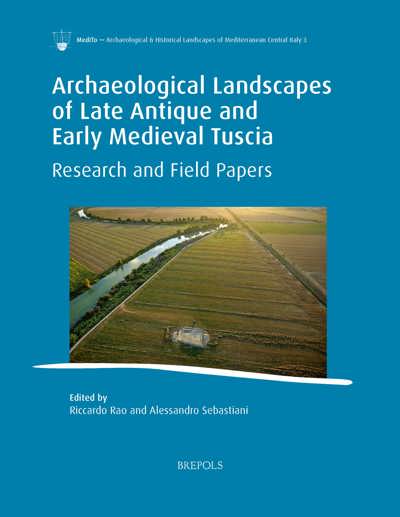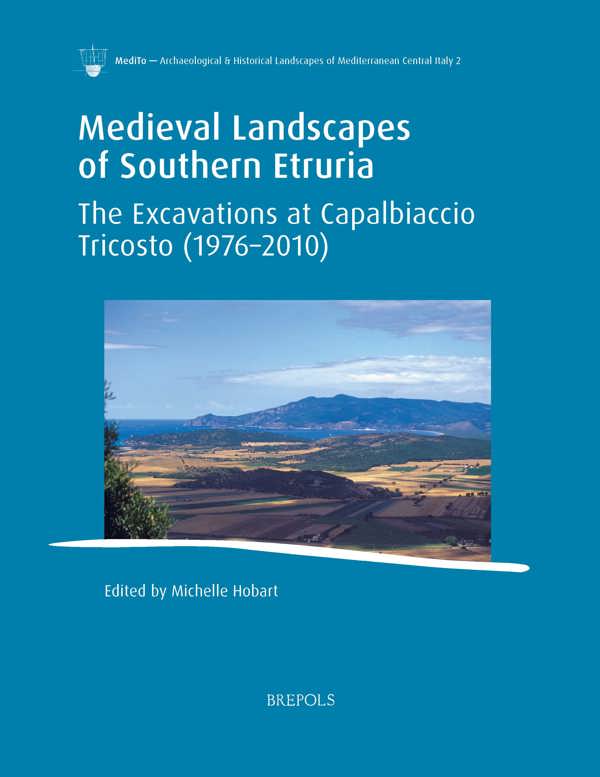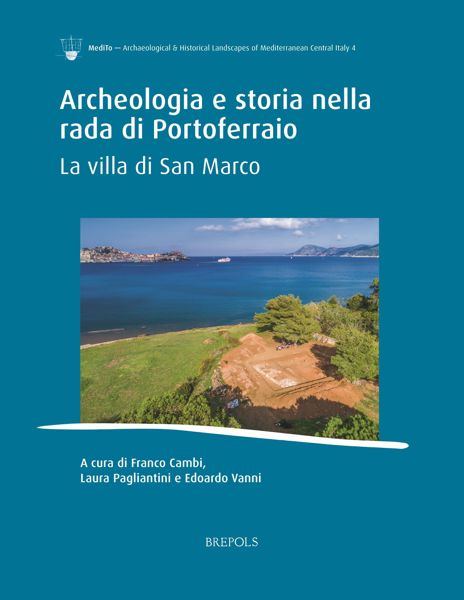
Medieval Landscapes of Southern Etruria
The Excavations at Capalbiaccio Tricosto (1976–2010)
Michelle Hobart (ed)
- Pages: 366 p.
- Size:216 x 280 mm
- Illustrations:83 b/w, 92 col., 23 tables b/w., 61 maps b/w, 8 maps color
- Language(s):English
- Publication Year:2023
- € 110,00 EXCL. VAT RETAIL PRICE
- ISBN: 978-2-503-59775-1
- Paperback
- Available
- € 110,00 EXCL. VAT RETAIL PRICE
- ISBN: 978-2-503-59776-8
- E-book
- Available
"Overall, the volume offers a comprehensive overview of a fascinating site. The combined use of stratigraphic evidence from the test trenches conducted in the 1970s and the new non-invasive research has enabled a more thorough understanding of the settlement’s structure and chronological development. (...) In conclusion, this volume deserves praise for engaging with a legacy archaeological dataset. “Legacy archaeology” has been growing in recent decades (...), but a shared methodology on how to approach datasets of old projects has yet to come. This volume offers a good take on the issue, combining material analyses to non-invasive methodologies." (Luigi Pinchetti, in Bryn Mawr Classical Review, March 2025)
Michelle Hobart is an archaeologist focusing on central Italy and the Mediterranean. Her interests range from urban and rural medieval settlements to landscape archaeology. She has a Ph.D. in medieval architecture from the Institute of Fine Arts, NY. Hobart is co-director of the IMPERO project and a related field school with SUNY Buffalo and Michigan State University. She is faculty at Cooper Union (NY) and among other publications, has recently authored and edited A Companion to Sardinian History, 500 – 1500 (Brill).
The fortified hilltop town of Capalbiaccio is a lost Etruscan settlement, a site that developed out of prehistory to become an important colony and grain provider for the Roman Empire, before being sacrificed to medieval intrigue and conquest by the Republic of Siena. The site, together with the castle of Tricosto, was first excavated forty-five years ago, but the results were never published. Then, in recent years, archaeologist Michelle Hobart was invited to explore the area with a new team and employ the latest techniques of remote sensing to explore the landscape and fortifications. The results of both explorations are presented here for the first time in this volume, which combines the invasive and non-invasive approaches of two generations of archaeologists to reveal what attracted settlers to this site, from the inhabitants of the late Bronze Age through to the most important families of medieval Tuscany. This book employs the best of the latest geophysical techniques and time-tested approaches to ground the history of Capalbiaccio, and to narrate how the fate of this small village was inextricably linked to regional and national networks, as control of the territory and the settlement’s reason for being evolved over time.
List of Illustrations
Acknowledgements
Part I. Genesis of the Project
1. The Archaeology of Coastal, Southern Tuscany
Michelle Hobart
2. Capalbiaccio: The Initial Archaeological Campaigns (1976–1980)
Stephen L. Dyson
Part II. Recent Research and Non-Invasive Archaeology
3. Geo-Archaeology of Coastal Southern Tuscany
Nicoletta Barocca
4. Geophysical Prospecting, Topography, Thermal Camera and DEM
Laura Cerri and Emanuele Mariotti
5. Medieval Wall Reading: The Archaeology of Architecture
Irene Corti
Part III. Material Culture and Survey of Post Medieval Southern Tuscany
6. Analysis of the Material Culture
Michelle Hobart
7. Pre-Etruscan, Etruscan, and Roman Pottery
Valeria Acconcia
8. Capalbiaccio and the Early Medieval Pottery in Southern Tuscany (900–1000)
Emanuele Vaccaro
9. A Comparative Study of Pottery from Southern Tuscany and Latium (1000–1200)
Chiara Valdambrini
10. Medieval Pottery (1200–1400)
Michelle Hobart
11. Small Finds
Elisa Rubegni
12. Coins
Alessia Rovelli
13. Archaeozoological Remains
Diana C. Crader
14. Field Survey of the Post-Medieval Settlement Patterns in Southern Tuscany
Herman Salvadori
Part IV. Historical Reconstructions and Conclusions
15. Reassessing the Etruscan Valle d’Oro
Michelle Hobart
16. Builders of Landscapes: The Aldobrandeschi and the Castle of Tricosto
Michelle Hobart
17. Concluding Remarks and Open Questions
Michelle Hobart
Appendix
Castle and Countryside: Capalbiaccio and the Changing Settlement History of the Ager Cosanus
Stephen L. Dyson
Works Cited
Author Biographies
Index




